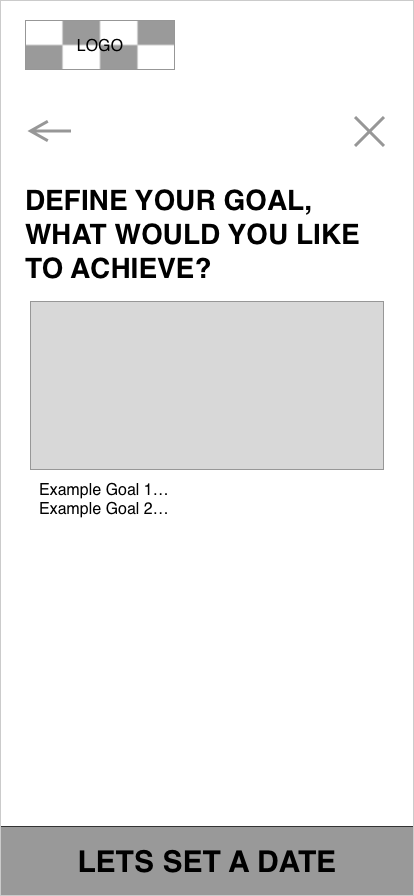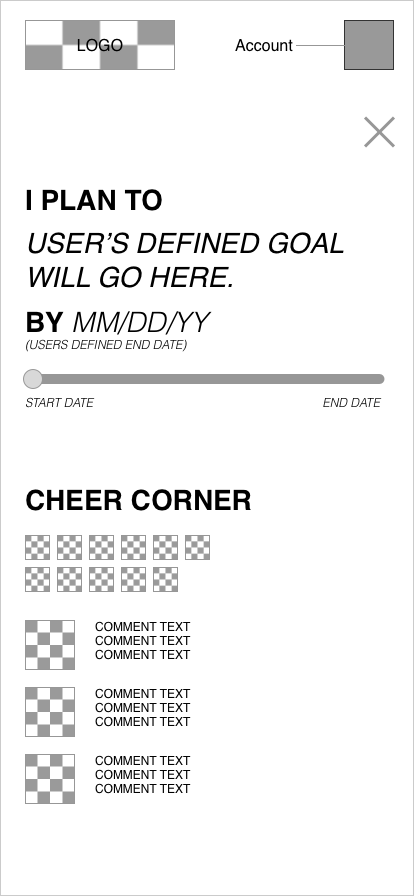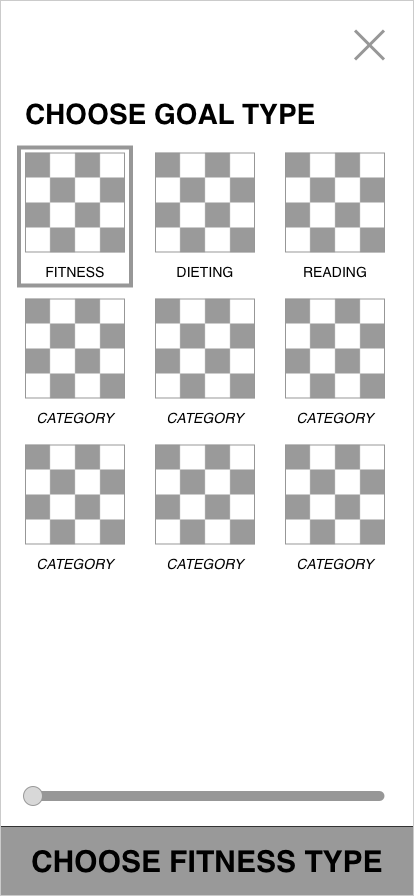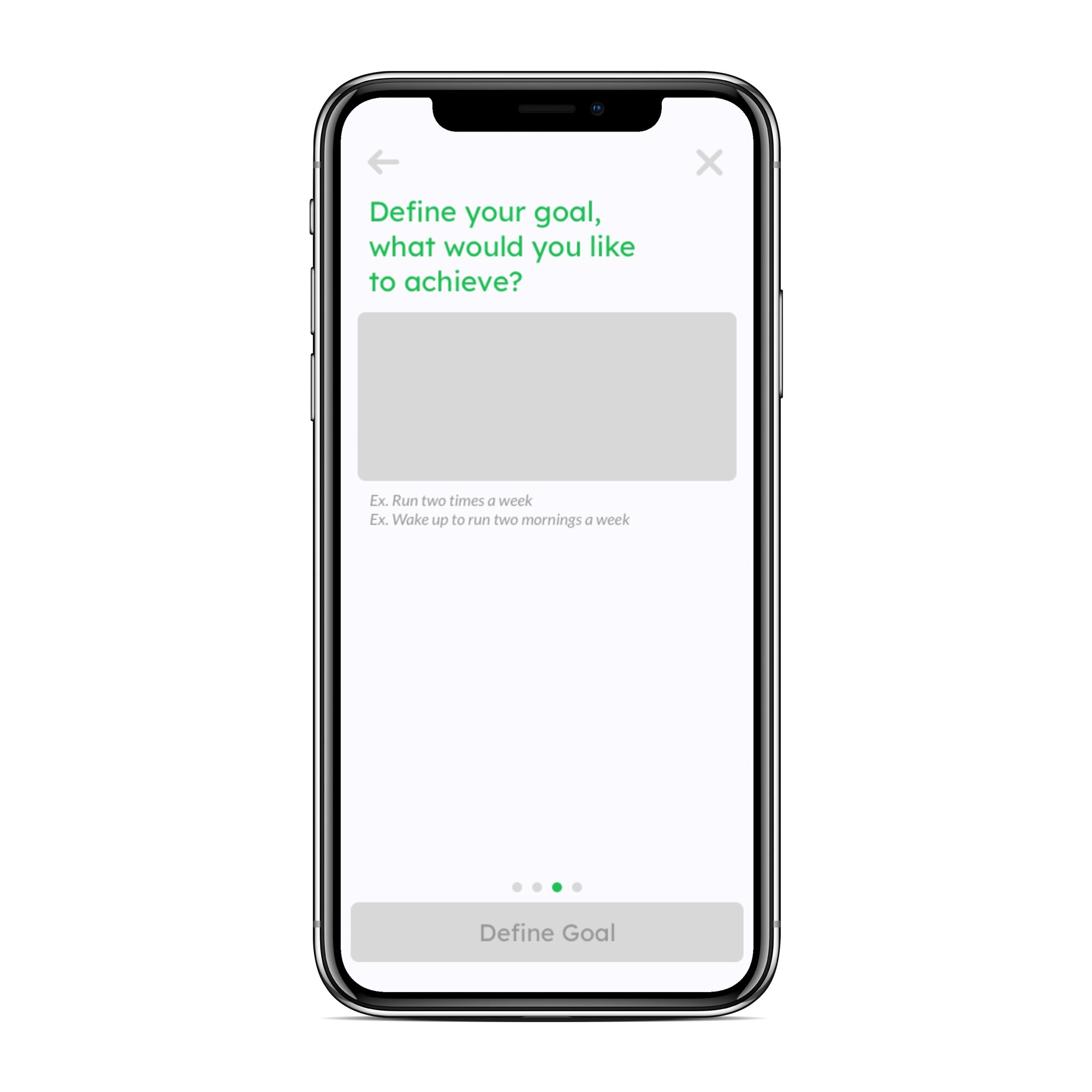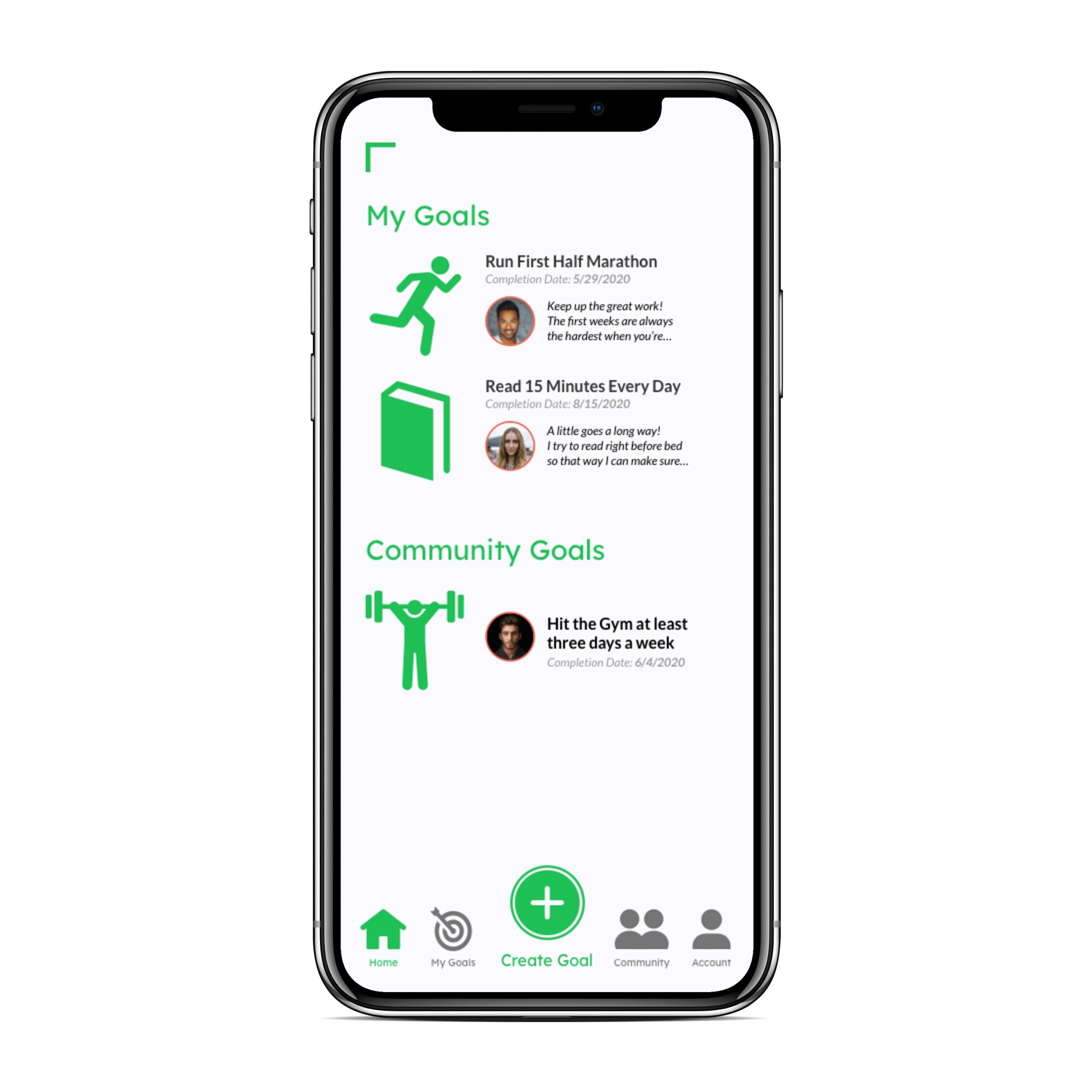As seen mentioned on Design Rush - 15 Best Bright-Colored App Designs With Eye-Catching and Vibrant Visuals
Capstone for General Assembly’s User Experience Design course. Tasked with tackling a problem
we were passionate about with an outcome that was intended to be a website or mobile application. The goal of this project was to apply industry-standard user experience techniques to solve
real problems.
Tools
Miro
Draw.io
Optimal Workshop
Marvel POP
Sketch
Invision
In my role as a UI/UX designer, I was responsible for...
User Research
Competitive Research (+ Analysis)
Card Sorting & Wireframes
Initial Sketching and Ideation
Low-Fidelity Wireframing
High-Fidelity UI Design
The Challenge
Each of us aspires to be the best version of themselves. To get there, we set goals. While it’s that simple on paper, it’s difficult to hold ourselves accountable. One or two skipped days in building a new routine with no accountability lets our goals become easier to fall apart. There has to be a better way to enable ourselves to reach our full potential.
How can I help people hold themselves accountable when goal setting?
So, how might we...
Create… an app that aids in accountability for goal setting
For… young professionals
To… actually achieve the things they set out to do for themselves to grow
And improve… the way we approach goal setting altogether.
User Research
Target Demographic
Young Professionals
Research Goals
Why people create habits?
How do they track them?
Why cant people keep habits?
What about starting something that’s so daunting?
What is holding people back from making changes?
Findings
After interviewing a sample size of three young professionals, at different points in their careers, the initial results show that all tracked their goals differently. The common thread between all of them was the driver for keeping the professional goals – accountability.
Data reflected that young professionals are more likely to keep the professional goals they set for themselves because they have other team members counting on them.
The responsibility to others and team dependability lead professional goals to be met while personal goals lack that structure.
Personal goals lacked the backbone to see through to completion as it was just the user against themselves.
Young professionals need a way to hold themselves accountable when setting personal goals because the professional drivers for growth are different than personal drivers.
Competitive Research (+ Analysis)
I looked at habit-building applications as they are the building blocks to goal setting. Many apps let the user see how long (Streaks) they have completed an action for, where others allow you to set reminders (Productive) on certain tasks. An outlier in the space was one that introduced a social aspect (Habitica), gamifing goal setting by turning your life into a role-playing game.
The gap that I wanted to fill was letting the communal aspect of goal setting be the key differentiator. Professional goals have a higher tendency to succeed as there is a dependence on others to follow through. Adding a community of like-minded goal-setters, who also set similar goals for themselves, takes away the feeling of isolation when setting personal goals and makes the sum greater than the parts.
Primary Goal
Create and track progress on goals
Users are able to create and track their goals. The goal creation feature prompts the user to pick what kind of categories the goal would fall into, what the goal is, and when they wish to complete it.
Receive support from other goal-setters with similar goals
When creating a goal, you’re placed with other users who are on a similar journey to you. It builds a community of people working towards a common means, cheering them on, and acting as a support system for personal growth.
Card Sorting and Wireframes
Card sorting revealed three main buckets for content: Goal Setting, Community, and Account Settings. These findings drove the design of the wireframes and information architecture of the app.
Initial Sketching and Ideation
I had an initial idea about how I wanted the app to look and feel - to me, the design seemed obvious and intuitive. The screens were full of large iconography, the CTAs were big and told the user what needed to be done next. The app’s dashboard was pretty barebones as I did not think much information outside of their goals and the community goals were necessary. Layout reflected a website and not a truly native mobile experience.
Low-Fidelity Wireframing
The main takeaways from the first round of testing were confusing navigation, lacked overall structure, and lack of confirmation screen.
The testing reflected changes to user’s confusion when goal setting. The user flow was easier to understand, but there wasn’t enough wording around what the user needed to do next. Lack of confirmation screens confused the user if their goals had actually been set. No real menu structure lets users confused how to navigate through the app.
The main takeaways from the second round of testing were resolved navigation issues, resolved confirmation issues, but the layout still didn’t reflect the true native experience.
The second round of revisions on the wireframes reflects user feedback on navigation, confirmation screens, and flow. The app navigation toolbar is anchored to the bottom and reflects known design systems for the user to understand. Timeline and breadcrumb features during goal setting screens helped the user understand where in the process they were Confirmation wording and a success screen, paired with a show/hide of the navigation bar show the users they had completed their task when they created the goal. Users did not find themselves getting lost through the application and there was no confusion on which screen they were in.
High-Fidelity UI Design & Prototype
Take Aways & Next Steps
Initial assumptions
No insight into what motivates people to set goals, No one size fits all solution since everyone has different styles for how they track goals. Motivations were the same between personal and professional goals
Final Outcome
Professional Drivers were VERY different than personal ones. Responsibility to others to follow through motivated professional goals. Don’t reinvent the wheel when it comes to design
Next Steps
Build community pages and social functionality, refine personal goal dashboard and goal management, and keep testing app functionality to ensure it meets the user’s needs.













